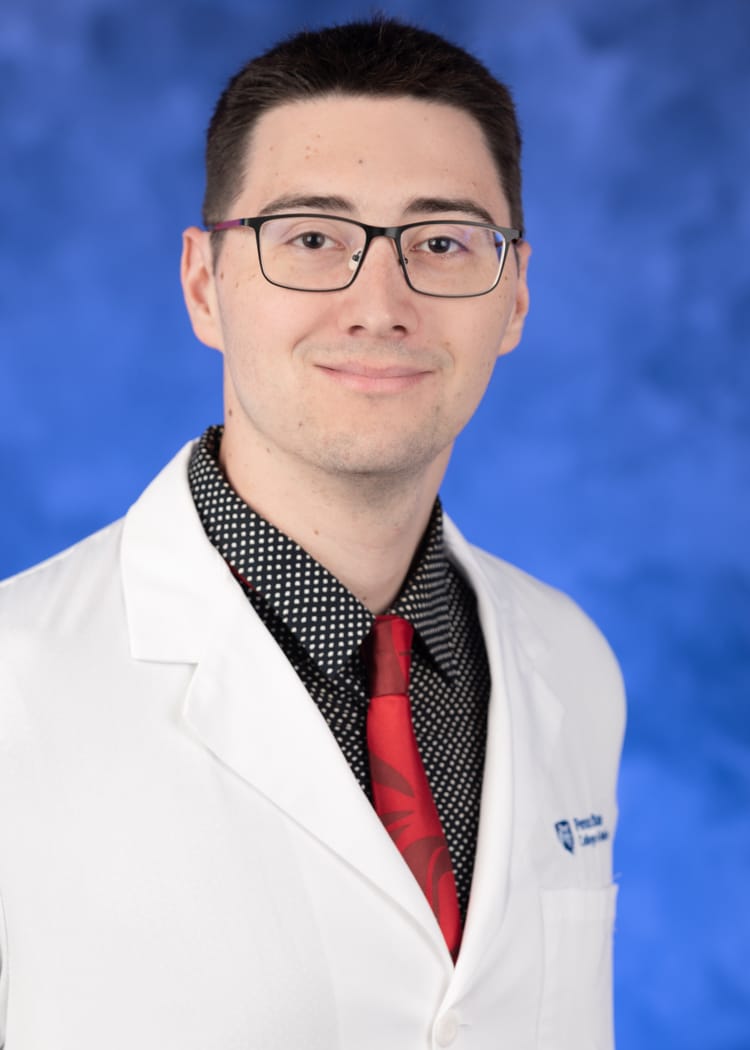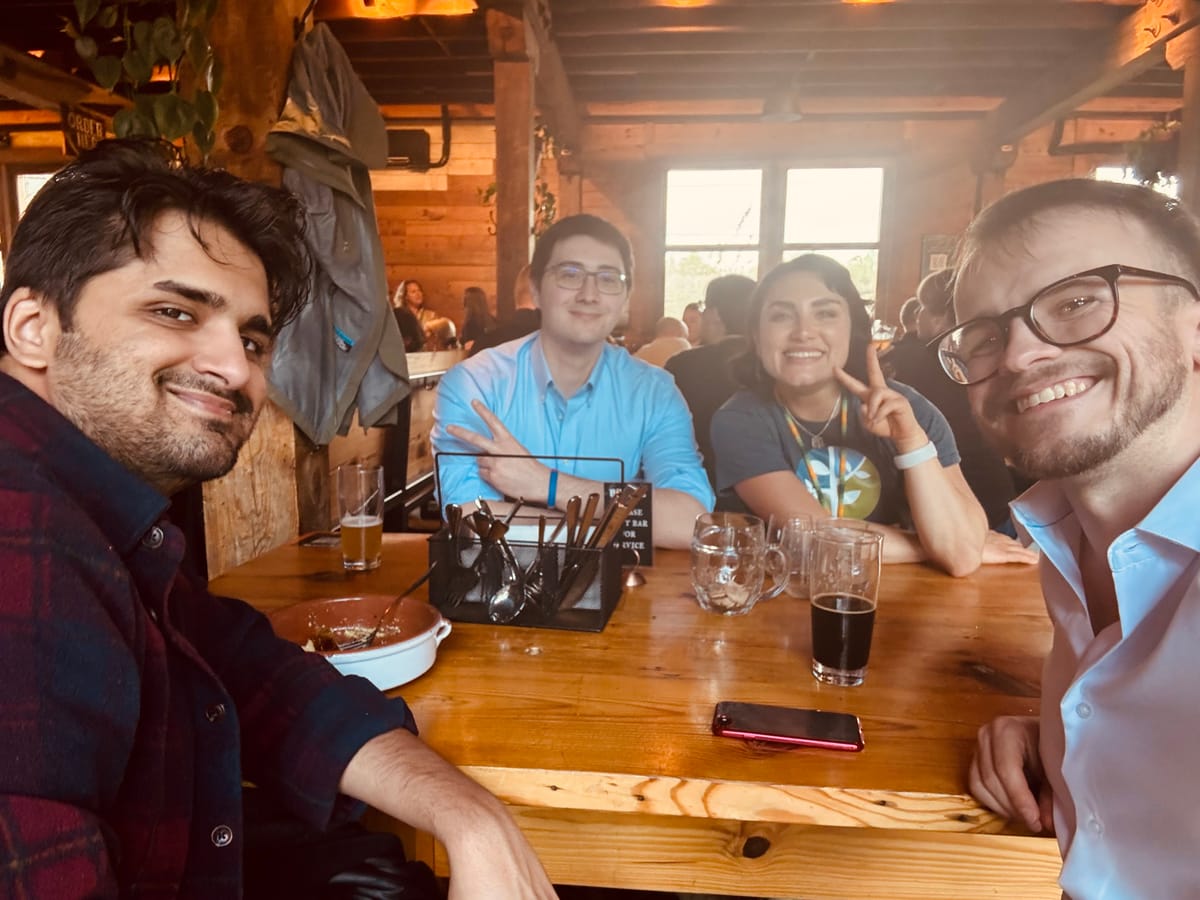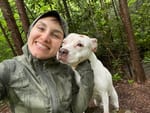Cameron Pauly is an aspiring MD, PhD studying medicine and microbial anthropology at Penn State University. He is a part of a rural training program while in medical school that offers him the opportunity to complete some of his training in rural sites across Pennsylvania. His interests include the human microbiome, maternal-fetal medicine, and the representation of diverse peoples in healthcare research - particularly the lack of inclusion of Indigenous peoples. In his future practice, he hopes to utilize his research to develop practical interventions to improve healthcare at the bedside and in the outpatient setting.
Responses are paraphrased & abridged for clarity. You can find Cameron on LinkedIn here.
OD: What is your definition of the microbiome, in layman’s terms?
CP: The microbiome is all the cells in the human body that are not human; it is a collection of microbes (primarily bacteria, viruses, archaea, some fungi and other eukaryotic organisms) that live in the human body.
Roughly half of the cells in the body are not human - they are part of the microbiome! Numerically - this is over 100 times the number of UNIQUE genes in the human genome.
These microbes live in any area of the body exposed to the outside world. Major sites include: gut, mouth, skin, vagina, lungs, ears. In many of these places, the presence of these organisms are critical to the function of that body part!
OD: What inspired you to study the microbiome?
CP: I majored in anthropology in undergrad at Colgate, and wound up at Penn State in a physician-scientist training program (MD/PhD) after discovering the research happening there around medical/biological anthropology (Paul Farmer style medical anthropology). I was particularly interested in the research happening in Laura Weyrich's lab, which I am joining soon. Her lab studies the evolution of the oral microbiome [the micro-organisms that live in the mouth and how that has changed over time], and how oral microbes affect systemic health - historically and in the present. It took a few years of applying to get into school, and I started my program in 2023 at Penn State.
Note from OD: I deeply admire Cameron’s vulnerability in sharing the truth of his journey. It is not easy to get up and try again when we are told no. To aspiring healers, scientists, and other world-changers: no is the most common response we receive when we when we take our ideas out into the world. Don’t get discouraged.
OD: What is the most fascinating thing you have come across in your research of the microbiome?
CP: A paper a few years ago from the Weyrich lab highlighted the resilience of ancestral microbes. It compared the oral microbiome of Indigenous and non-Indigenous Australians, and one of the findings - wholly unexpected - was that Endomicrobia were found in the oral cavities of the indigenous study participants. These microbes had not been reported in any human microbiome studies to date. What’s unusual about these bacteria is that they usually live inside the digestive tracts of termites, and function to help them break down fiber. After this research was published, it was recognized that termites were a traditional food to Indigenous Australians. Researchers believe that this microbe entered the microbiome of the Indigenous Australians when termites were ingested as a food source for these communities, which was generations ago! None of the study participants, their parents, or their grandparents actually ate termites - but this microbe was found in their microbiomes. To me, this study highlights the importance of traditional foodstuffs in the formation of the oral microbiome, and how organisms that find a “niche” tend to stay around for a really long time.
Heritage-specific oral microbiota in Indigenous Australian dental calculus (2022): https://doi.org/10.1093/emph/eoac024
OD: I think about the microbiome from a wholistic (spelling intentional) perspective, like a living catalog of who we are, where we come from, and what our habits are. Something that’s fascinating to me is although the microbiome changes dynamically as we change what we eat and do, it has a remarkable capacity to maintain its composition even when this is disrupted (by antibiotics, dietary changes, etc). Is it surprising to you that this microbe was found in the mouths of Indigenous Australians, despite the fact that they have not eaten termites in generations?
CP: The interplay between stability and change in the microbiome is incredibly complex, and speaks to the community dynamics of microbes living in different places. It tells us that bacteria/other microbes that are well established are very well suited to the places they are living. This gives us a clue to how humans and our microbiome have co-evolved. Community composition can change quickly when diets change, for example, and this also tells us that if you change the input you’ll change the output - potentially to bacteria that are not well suited to the environment. I can’t really answer this question about how the balance happens between stability and change, but it is fascinating.
Regarding the microbiome as a record of what our origins are, this speaks to the concept of embodiment in anthropology. Embodiment is a way of looking at our lived experiences, and how they map onto the body itself, and become material through that relationship. This emerged from anthropological theories of the 1970s and has been a part of medical anthropology since then. It centers the social in terms of how we think about humans, as more than just a natural biological force, but rather as the human body is affected and marked by our social habits. Embodiment is a framework I like to keep in my head, though I’m not a cultural anthropologist, because it makes it easier to center and remember the importance of social factors when practicing medicine. A book folks might find interesting is Gut Anthro, by Amber Benezra.
OD: You are becoming an MD-PhD, an incredible role where you get to bridge gaps between cutting edge research - what’s happening in labs, and what thought leaders are studying and understanding - and bringing that into practice in institutions and hospitals and clinicians in their own offices. In a world unfettered by obstacles, how do you envision your unique anthropological perspective and understanding influencing your practice and the practice of other physicians?
CP: We refer to this translational model in a catch phrase: “bench to bedside”. We [MD-PhDs] are trained as scientists and as physicians, to understand the interplay of those different aspects of biomedicine and then to bring that to the care of patients. One thing I love is that my research is in the anthropology department, so there is an additional skillset for me in the overlap with the study of social sciences. For my own future career, a couple of the ways I envision myself translating science into practice is helping primary care doctors better screen for and assess the health of the oral cavities of patients. I’m not a dentist, but I want to better understand and communicate the relationship between oral microbiome health and systemic health, and take that information into practices that will improve patient care.
For example, “bad” or “pathogenic” microbes that take hold in the oral cavity really like to go other places. This is because there is a lot of vasculature in the oral cavity, so it’s easy for microbes and/or toxins to go from the oral cavity to the rest of the body. There is a growing movement of primary care physicians doing basic preventative oral health, especially in children and pregnant people, particularly because these populations are more at risk for negative oral health outcomes and are more likely to see a physician than a dentist! Integrating oral health into the primary care workflow is something that more people are thinking about, like what might be the best way to do this? One example of how this is already happening is the application of fluoride varnish to patients’ teeth (and the ability to bill for that). This is possible because it is a USPSTF recommendation, which has helped from a billing perspective to make it a part of primary care.
A few other ways I envision incorporating this is research into developmental origins of disease, especially how disease/microbes are transmitted vertically from elders to children, chiefly from parents to children. Microbiomes of offspring tend to look like the microbiomes of the people they spend time around. My current plan for my career is to pursue maternal-fetal medicine, to be positioned at that mother-infant junction in terms of developmental origins of dysbiosis, and how to cultivate good microbial health.
I'm also very interested in indigenous health, and the value I see here is that for most of the "dogmas" of medicine, we don't have data from indigenous peoples. Acquiring more knowledge about the microbiomes of indigenous folks could be hugely beneficial for human health.
Note from OD:
I was curious about how the application of fluoride to teeth might affect the oral microbiome. This study (2023) concluded that fluoride applied to teeth inhibits the growth of bad bacteria, and promotes the growth of microbes that are associated with good oral hygiene.
However, continuous exposure to fluoride in drinking water and other sources may cause disease and disruption to endocrine, skeletal, and digestive systems (source, 2023). Additionally, they leave an excellent pearl about prevention of caries: "... evidence for the negative impact of excess sugar intake on the oral microbiome is overwhelming and public health initiatives that tackle excess sugar consumption are likely to be a more effective method to improve the health of the oral microbiome and reduce the incidence of dental caries".
OD: Practically, how hard is it to map someone's microbiome right now? In the future, as a family physician, could I order a test to assess someone's microbiome? How can you know if it is "good" or "bad"?
CP: The field as a whole is very new, and the intricacies of the balance of human microbiomes is complex. We don't know what "normal" really looks like - not even for the oral cavity or colon, which have been extensively studied.
The basic principle for most sites, with the exception of the vagina, is that MORE diversity is better. This is because less diversity can enable one specific microbe to outcompete or outgrow the others, and disrupt the normal resident communities.
An example of this in the gut is Clostridioides difficile (C. diff) colitis, which is when the normal flora is wiped out from courses of antibiotics, often in the hospital setting, and in the aftermath, the only thing that grows is C. diff, which is normally present in healthy colons, but without all the other microbes to balance it out, it goes haywire. In the mouth, there are specific microbes known to cause periodontitis and dental caries.
At this point in practice, you're really looking for symptoms that could be indicative of a dysbiosis - like persistent periodontitis or dental caries, or colitis-like symptoms, and from there you can pursue treatment based on the abnormalities in the microbiome that are likely responsible. You're not really ordering testing to map a microbiome to explain disease. We're not really at the point to use this clinically just yet, with the exception of treating C. diff infection with fecal transplants. In the lab I'm about to join, we are exploring the idea of doing oral microbiome transplants. A last example is endocarditis, which is associated with poor oral hygiene and dysbiosis of the oral cavity - which might also be an indication for an oral microbiome transplant.
OD: What practices, if any, do you personally engage in to support the health of your microbiome? What about fermented foods?
CP: We don't really know if there are specific characteristics of a healthy microbiome, besides diversity of species. I like to keep things simple, unless and until very compelling evidence comes out. I don't adhere to anything super specific, but the general rules I go with are:
- avoiding too many processed foods, especially ultra processed foods.
- avoiding foods high in added sugar / salt
- avoiding too much of any particular dietary item!
The caveat to these "rules" are that I would not advise anyone to avoid any culturally significant or ancestral foods in the name of a healthy diet. The key point is to avoid processed foods as much as possible, because those sorts of foods represent a major shift away from the "ancestral" diet [CP noted he hesitates to use this term because there are so many different ways of getting nutrition culturally and historically]. But what we know for sure is that things like McDonald's are foods that people did NOT eat for about 99.9% of human existence.
Regarding fermented foods, fermentation is a process that produces a diverse microbial community in that foodstuff. It probably does improve diversity of the microbiome, and it is a practice that has been around for a long time - it's well represented in the archaeological record. These foods have been consumed for a long time, and are probably not bad for us based on that. On the whole, they're probably beneficial, but I wouldn't go crazy with it just trying to improve your microbiome.
OD: What are the consequences of dysbiosis [an unhealthy/altered microbiome]? What about the benefits of a healthy microbiome?
CP: The more types of microbes you have around, the less space there is for one particular species to grow significantly and cause problems. There is a protective effect of diversity! It prevents pathogenic bacteria from taking hold and growing to a point that causes disease.
A number of bacterial species actually BENEFIT their hosts. Particularly in the digestive tract of humans, there are a lot of components of the food we eat that require functional microbiota to be digested! For example, we have microbes in our gut that help us digest fiber. Another major benefit we know of is that being exposed to many different types of microbes "primes" our immune system so it gets smarter. Essentially, more exposure to diverse antigens, especially when we're growing up, makes our immune systems smarter, so that we don't have an immune response to something that is normal.
Note from OD: it is increasingly acknowledged that exposing allergens to infants decreases allergies and inflammation in adulthood. You can read about that here.
Conversely, the consequences of having dysbiosis are the inverse of what I just talked about - you have too many "bad actors" or pathogens, and you lose the functional capacity of the good microbes. So you lose the help from the good microbes, and you can have disease caused by the bad ones.
One exception to the "diversity is good" hypothesis is the vagina. The vagina has just one taxon, nearly all Lactobacillus - which are lactic-acid fermenting bacteria, which create an acidic environment, similar to the stomach. The vagina and the stomach require a lower pH for their function. This is protective against other types of bacteria that would otherwise colonize the vagina and overgrow, and cause inflammation and disease. There also seems to be some value in terms of reproduction, by keeping the vagina at an acidic pH.
OD: What is one thing all physicians should know about the microbiome?
CP: Physicians still struggle to grasp that humans aren't just human. We host a vast quantity of different species with nearly innumerable genes and cells. Whenever you're treating someone, you need to think about the cells that make up the whole body - not just the human cells. You really can't just flood people with antibiotics, because you're endangering the bacteria that are helpful, too. This is the classic example of C. diff colitis in the hospital.


